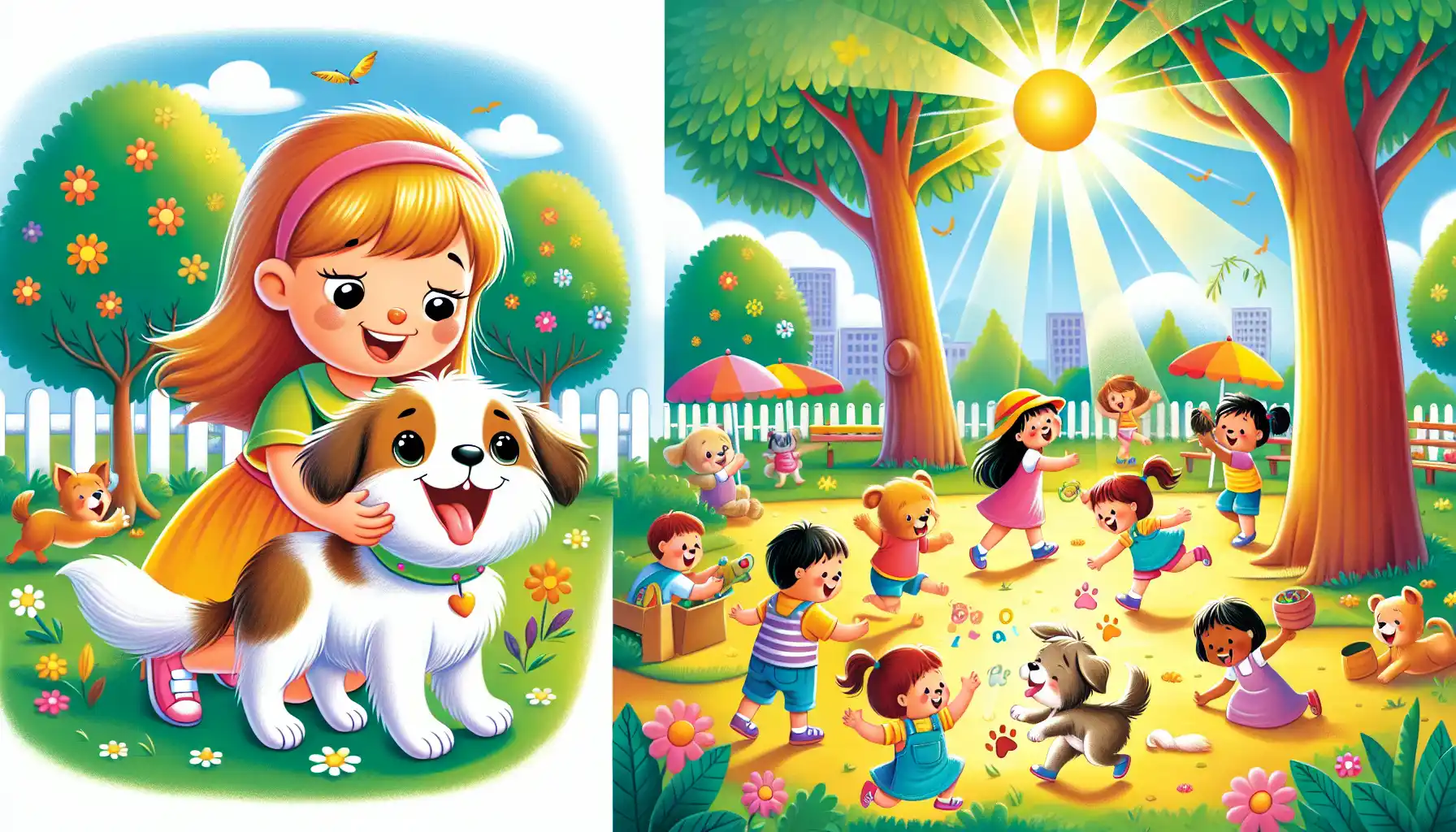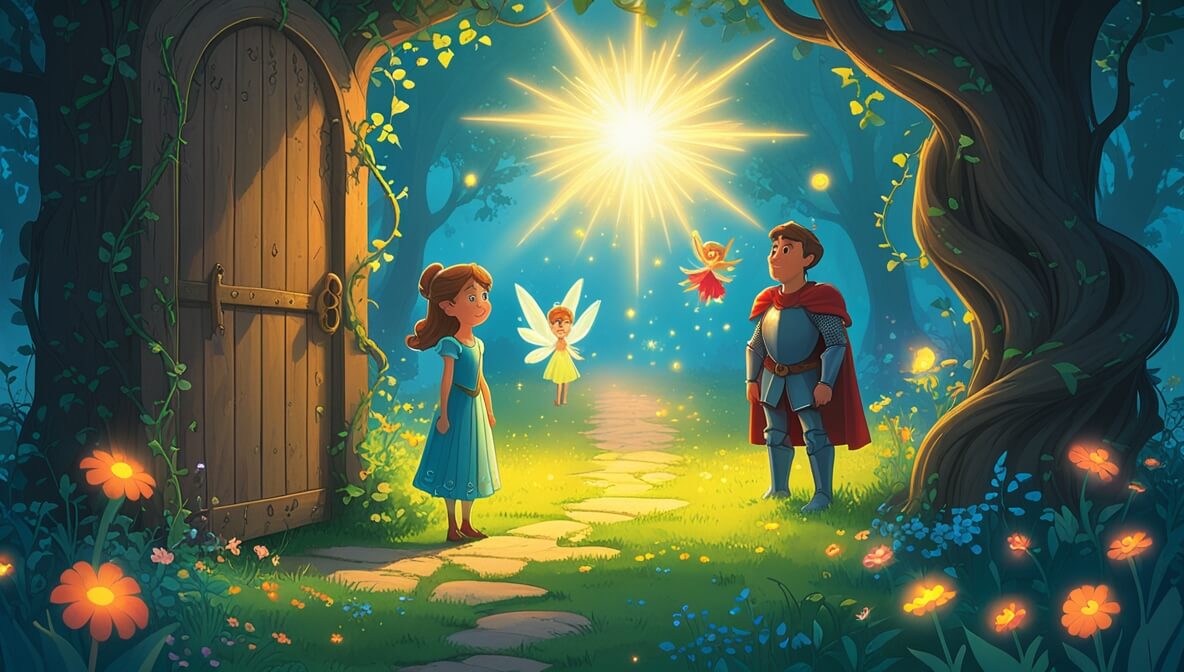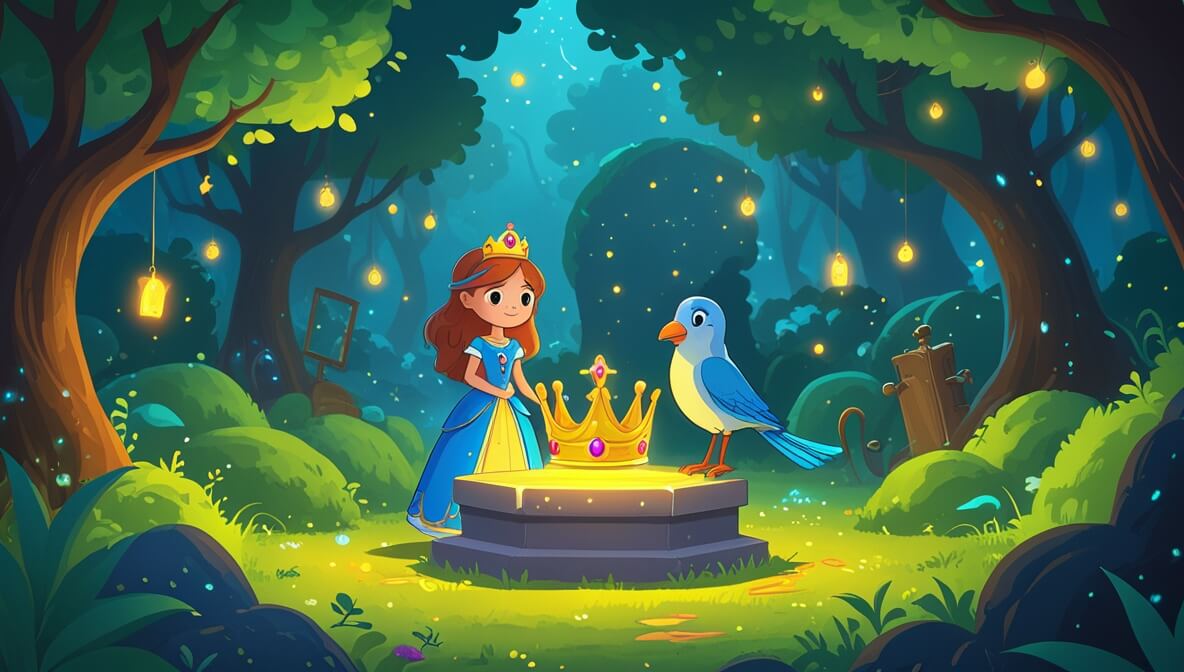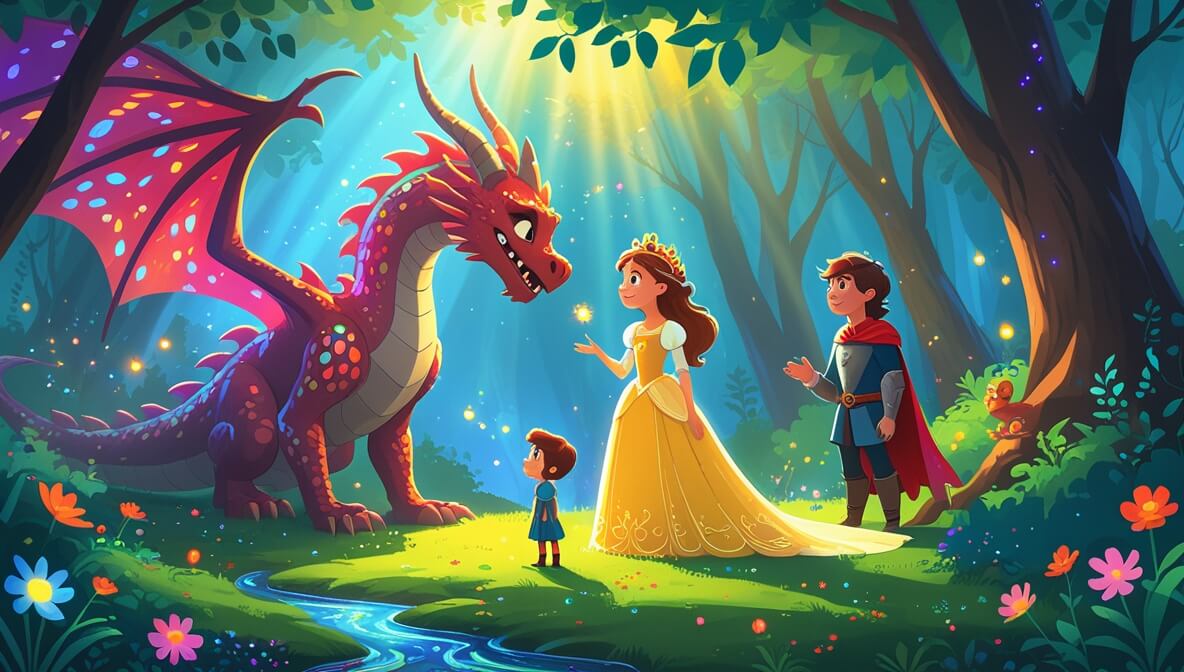Benny, an adventurous pup, and his owner Sarah spend a day exploring, making new friends, and learning the joy of sharing.
Age Recommendation
3 - 7 years
Characters of Benny’s Big Day Out
Characters:
- Benny (an energetic little dog with a love for new experiences)
- Sarah (Benny’s kind-hearted owner who enjoys nature walks)
Story of Benny’s Big Day Out
It was a beautiful morning, and Sarah decided to take her dog, Benny, on a walk through the neighborhood. Benny trotted happily beside her, his tail wagging and nose sniffing all around.
As they strolled, Benny spotted a group of kids playing in a nearby yard. With a joyful bark, he ran over to say hello, wagging his tail furiously. The kids giggled and petted Benny, who loved every second of attention.
Sarah smiled and watched as Benny gently accepted a ball one of the children offered. Soon, Benny was running back and forth, playing fetch with his new friends. He was the happiest pup in the world!
After a while, Sarah and Benny continued their walk, coming across a little duck pond. Benny watched in amazement as the ducks paddled around, quacking cheerfully. One duck came close to the shore, and Benny sat still, watching quietly. Sarah whispered, “Good boy, Benny. Sometimes it’s nice just to watch and listen.”
Just as they were about to head home, Sarah noticed an elderly man sitting on a bench, looking a bit lonely. She led Benny over, and Benny sat down beside the man, leaning his little head on his lap. The man chuckled and gently petted Benny, his eyes lighting up with joy.
With the sun setting, Sarah and Benny made their way back home. Benny was tired but happy, his big day filled with new friends and gentle moments of kindness.
Moral of the Story
Sharing kindness and taking time to appreciate the little things bring joy to everyone around us.
Questions to Think About
- How did Benny make new friends with the kids?
- Why did Sarah say it was nice just to watch the ducks?
- How did Benny make the elderly man feel happy?
Do You Know
- Dogs often lean against people as a way of showing trust and affection.
- Ducks make soft quacking sounds to communicate with each other.
Word Explorer
- Gentle: Soft and careful, like the way Benny sat with the man.
- Affection: A feeling of liking and warmth.
- Appreciate: To enjoy or value something special.
Emotions in the Story
- Excitement: When Benny meets the kids and plays fetch.
- Curiosity: Watching the ducks in the pond.
- Kindness: When Benny makes the elderly man feel happy.
Color Your Scene
Imagine Benny sitting quietly by the pond, watching the ducks with Sarah nearby. How would you color the ducks, the water, and the setting sun?
Parents' Corner
This story shows the value of small moments of kindness and the simple joys in life. Talk to your child about how their actions can make others happy, even in small ways.
- 10 Minute Bedtime Stories
- 15 Minute Bedtime Stories
- 2 minute bedtime stories
- 20 Minute Bedtime Stories
- 3 Minute Bedtime Stories
- 5 Minute Bedtime Stories
- Adventure stories
- Animal stories
- Baby stories
- Bedtime Stories About Friendship
- Bedtime Stories For 10 Year Olds
- Bedtime Stories For 2 Year Olds
- Bedtime Stories For 3 Year Olds
- Bedtime Stories For 4 Year Olds
- Bedtime Stories For 5 Year Olds
- Bedtime Stories For 6 Year Olds
- Bedtime Stories For 7 Year Olds
- Bedtime Stories For 8 Year Olds
- Bedtime Stories For 9 Year Olds
- Bedtime stories for boys
- Bedtime stories for girlfriend
- Bedtime stories for girls
- Bedtime Stories For Preschoolers
- Bedtime Stories For Toddlers
- Bedtime stories with cats
- Bedtime Stories with dogs
- Bedtime stories with pets
- Best bedtime stories
- Campfire stories for kids
- Childhood stories
- Children's funny & humorous short stories
- Children's stories about feelings
- Children's Stories About Grandparents
- Children's Stories With Bears
- Children's Stories With Birds
- Children's Stories With Bunnies
- Children's Stories With Grandmas
- Children's Stories With Lions
- Dialogue Stories
- Dinosaur Bedtime Stories
- Entertaining Short Stories
- Fairy Tales
- Famous Fairy Tales
- Famous Short Stories
- Ghost stories for children
- Good bedtime stories
- Long Bedtime Stories
- Long Bedtime Stories for Girlfriend
- Love Bedtime Stories
- Magic stories
- Moral stories
- Motivational Stories For Kids
- Pirate stories
- Popular bedtime stories
- Princess Bedtime Stories
- Quick Bedtime Stories
- Romantic bedtime stories
- Scary Ghost Stories
- Scary stories for kids
- Short Bedtime Stories
- Short Bedtime Stories for Adults
- Short Bedtime Stories for Kindergarteners
- Short Stories For 1st Graders
- Short Stories For 2nd Graders
- Short Stories For 3rd Graders
- Short Stories For 4th Graders
- Short stories for 5th graders
- Short Stories For 6th Graders
- Short Stories For 7th Graders
- Short Stories For Elementary Students
- Short stories for kids
- Short stories for Middle School Students
- Short stories with heroes
- Short stories with moral lessons
- Spooky stories
- Stories about being in danger
- Stories About Courage And Bravery For Kids
- Stories about forgiveness
- Stories about kindness
- Stories That Rhyme
- Stories With Castles And Kingdoms
- Stories with dragons
- Stories With Monsters, Beasts And Wild Creatures
- Uncategorized
- Unicorn stories
- Very Short Stories For Kids
- Witch Stories











